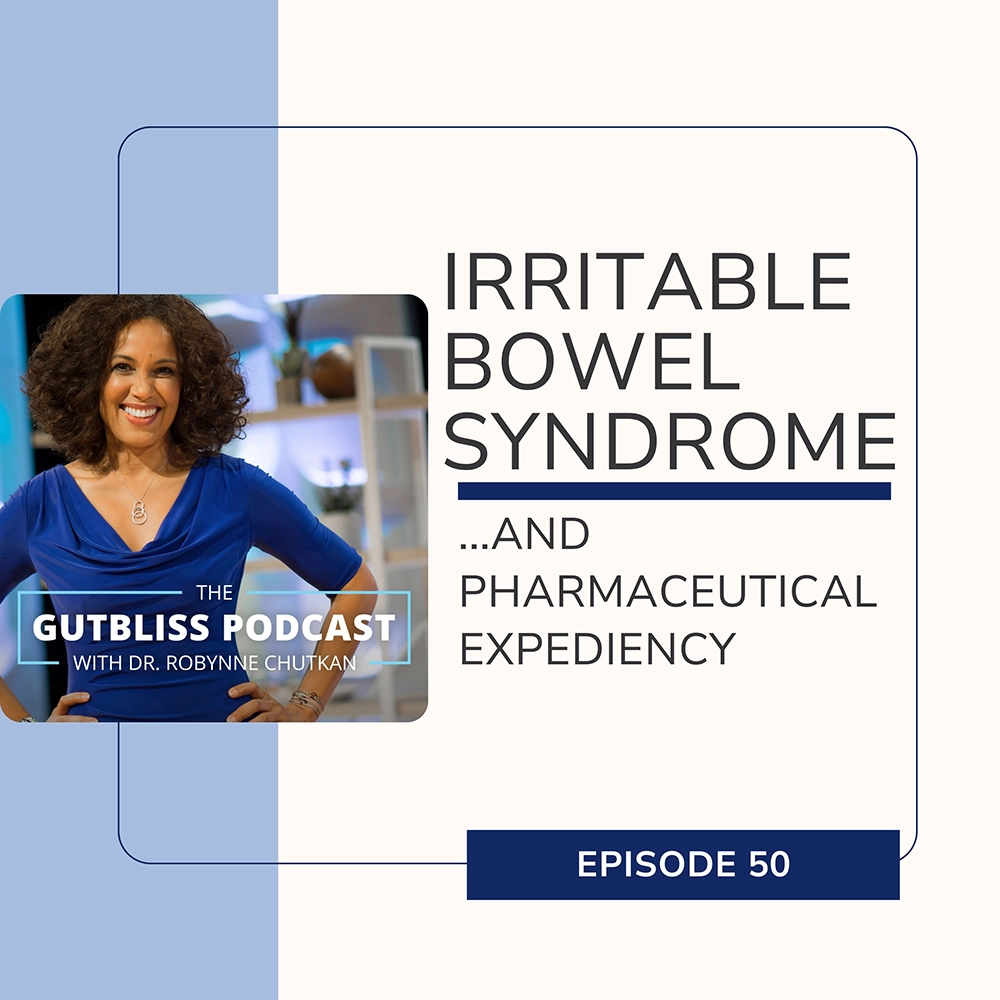The fundamental shift that’s required for a more holistic approach to acne, is to move away from the question: “What can I take to fix my skin?” and instead ask “What am I doing that could be messing up my skin?” And this is not about blame. It’s about empowerment. Yes, some people are more genetically predisposed to acne, but acne is not a genetic condition; it’s an environmental condition. So the focus needs to be on creating an anti-inflammatory environment in and on your body, and that starts in your gut!
Thank you for being a part of our community! For the latest in digestive wellness go to https://gutbliss.com/ and follow us on Instagram for more gut health info.
The fundamental shift that’s required for a more holistic approach to acne, is to move away from the question: “What can I take to fix my skin?” and instead ask “What am I doing that could be messing up my skin?” And this is not about blame. It’s about empowerment. Your body’s natural default setting is good health and clear skin. Yes, some people are more genetically predisposed to acne, but acne is not a genetic condition; it’s an environmental condition. So the focus needs to be on creating an anti-inflammatory environment in and on your body.
Acne can be a very anxiety provoking condition. Not because we’re vain, but because our face is what we present to the world, and it’s also what we see reflected back at us in the mirror. And when our skin looks unhappy, it often makes us unhappy. Why? Because acne is more than just the presence of pimples; it’s a sign of systemic inflammation. In last week’s episode, I talked about the gut-skin axis, and I explained how inflammation in your gut can show up on your skin. In this episode I’m going to focus on acne and provide you with some gut-based solutions that can clear up your skin and make you healthier.
But first, let’s talk about the 3 main factors that lead to acne:
- Overproduction of sebum – that’s part of the lipid layer of fatty molecules I talked about in last week’s episode that keeps your skin moist and lubricated and also protects your skin from harmful pathogens.
- Obstruction of the oil glands in your skin, these are sometimes referred to as sebaceous glands and they connect to your hair follicles. The excess sebum mixes with dead skin cells to form a plug in the follicle that turns into a pimple.
- Inflammation caused by overgrowth of certain bacteria on the skin, including a bacteria called Propionibacterium acnes or P. acnes for short.
And I want to remind you that just like in the gut, when we see overgrowth of yeast species like Candida and problematic bacteria, it’s not the Candida or the “bad bacteria” that’s the problem. It’s the fact that there are not enough healthy bacteria in the gut to crowd them out. And that’s also what’s happening on the skin: overgrowth of P. acnes is a result of undergrowth of some of the healthier skin species, like Staph epidermidis. So it’s this imbalance of microbes on the skin that’s the problem. The same sort of imbalance we see in the gut with dysbiosis. And what causes that imbalance on the skin? Antibiotics, harsh cleansing products that damage the skin’s epithelial layer, and a poor diet. And what causes it in the gut? Antibiotics, medications like NSAIDs that damage the gut’s epithelial lining, and a poor diet. You feeling me here with the similarities? And to successfully treat these problems, you have to address those root causes.
There are 2 additional ways we know that bacterial imbalance in the gut (dysbiosis) contributes to acne. One is that certain bacteria in the gut can increase the production of hormones that ramp up the production of sebum. And the second mechanism is that dysbiosis in the gut interferes with your body’s ability to absorb nutrients like chromium, B complex vitamins, selenium, and zinc – which are essential for healthy skin. And here’s the thing; supplements are not the answer, because if your gut microbiome is disrupted, you’re not going to absorb the nutrients in the supplements any better than you were absorbing the nutrients from food.
Disruption of your gut microbiome also affects the permeability of your gut lining, leading to what’s commonly known as leaky gut. If you add in a highly processed diet full of preservatives and emulsifiers that damage your gut lining, plus a lack of nutrient rich food, then now you have an ideal situation for inflammation to occur. Toxic substances and waste matter that should normally be excreted in the stool, can now translocate through your compromised gut lining and trigger an inflammatory response elsewhere in the body – like on your skin.
That’s why we often see acne in teenagers who have a history of lots of antibiotics in childhood, and who are now eating a highly processed diet, plus going through hormonal changes. During puberty the sebum starts to thicken and mixes with the problematic bacteria that have been cultivated through heavy antibiotic use, and/or a sub-optimal diet.
My own daughter received over 20 courses of antibiotics before she was two years old, and like many teenagers, she struggled with her skin as she went through puberty. And many, well-meaning dermatologists tried to tell me that antibiotics were the solution. But I knew that antibiotics were actually part of the problem. And there was no way I was going to expose her to more damage in order to achieve a short sighted fix. I’d seen so many of my patients go down that road of increasingly potent antibiotics and watched their acne relapse over and over again, as the bacteria on their skin became more and more resistant to the various antibiotics, and even more imbalanced. And I also knew that many of the serious health problems they were dealing with were related to that excessive antibiotic use. Treating acne with antibiotics is like treating SIBO (small intestinal bacterial overgrowth – a form of dysbiosis) in the gut with antibiotics. Initial improvement as you remove a lot of the bacteria, but as soon as things start to repopulate, the microbiome comes back even more imbalanced. That’s why antibiotics don’t cure acne – they just temporarily suppress it and in the process create more resistant and even more pathogenic bacteria.
Given what we know about the risks of antibiotics in young people autoimmune diseases like Crohn’s and colitis, neurocognitive problems, obesity, allergies – it’s completely unacceptable that dermatologists are still prescribing antibiotics for acne. The class action lawsuit against Accutane – the popular acne drug that’s a vitamin A derivative – for causing colitis was likely also related to the antibiotics all the patients took before being prescribed Accutane, because at the time, you had to have “failed” antibiotics before you could get prescribed that drug. And we know there is a clear link between antibiotics early in life and development of Crohn’s disease and ulcerative colitis.
If this sounds like a rant, it is! Because I can help you overcome the damage to your GI tract from a week of antibiotics or even a month. But the patients I see with the worst GI issues, (not to mention other complications) and the most messed up guts are the ones who have been taking prolonged antibiotics for years for acne. And I think if somebody had properly informed them about the downstream side-effects and long term risk, there’s no way they would have taken those drugs. There is no highly selective antibiotic that only kills the “bad” bacteria on your skin without decreasing the essential species too. Doxycycline, which is the one that’s commonly used to treat acne, is absolutely ruinous to the gut.
Don’t obsess about cleaning your skin because acne isn’t caused by dirty skin. Overproduction of sebum is a contributing factor, but again, you have to ask, why is your skin overproducing sebum? It’s trying to protect itself! Probably because you are drying it out with products, or peels or lathering agents like sodium lauryl sulfate that are disrupting your skin’s protective barrier. Just like an irritated gut will start overproducing mucus to try and protect itself. First thing I tell my patients suffering from acne is to stop washing their face with these cleansers, and to just spray some mineral water like Evian or Avene on a cotton pad and gently wipe their skin.
There is so much information to discuss about this gut-based approach to skin conditions. I’ve included some helpful tips below, but I’ve also created the GUTBLISS GUIDE TO HEALTHY SKIN. A comprehensive resource for acne, rosacea, eczema and psoriasis that goes into all the details: what products to use and which ones to avoid, what food to eat and what you should stay away from. A list of medications that can really mess up your skin and gut, and which ones are safe to use for conditions like acne, eczema and rosacea. How to gently cleanse your skin to remove makeup or sweat without disrupting your skin’s lipid layer, bacterial composition, pH, or epithelial lining. And some exciting new data about herbal remedies like Rehmannia glutinosa leaf extract that seem to be promising, safe and effective. These are tools that I’ve used successfully in my patients to help them clear up their skin. You can find the GUTBLISS GUIDE TO HEALTHY SKIN under GUT GUIDES.
In the meantime, here are some takeaways for incorporating a more gut-based approach to acne:
- There’s a strong connection between what you’re putting into your body, and what’s coming out of your body: garbage in=garbage out, and that garbage is going to show up on your skin as acne. Avoid packaged foods with a list of chemical ingredients – those substances disrupt your gut lining and allow toxins and other inflammatory substances to penetrate through and cause inflammation on your skin. Most of us can get away with a little bit of junk food but try and make sure that ultra processed foods constitute less than 10% of your diet. What should you be eating instead? Focus on unprocessed food like fruits, vegetables, nuts, seeds, whole grains and lean animal protein if you’re a meat eater.
- Cow’s milk is a strong trigger for acne in most people, especially teenagers where there’s a lot of hormone activation. But be careful with non-dairy plant milks that often contain emulsifiers and gums like lecithin, carrageenan, xantham gum and guar gum that are terrible for your gut.
- Beware of foods that claim to be healthy but have lots of added sugar and chemical ingredients, like granola bars, probiotic drinks, and enhanced water. Ignore the marketing claims on the front of the label and read the actual ingredients hidden on the back in small print instead. Here’s what the most popular vitamin water on the market says it can do for you: “2.5x times the antioxidants to help combat free radicals, more nutrients, electrolytes and other good stuff.” But here’s what it actually contains: crystalline fructose, calcium pantothenate, pyridoxine hydrochloride, sodium selenate, magnesium and calcium lactates and potassium phosphate, cane sugar, citric acid, acacia gum, natural flavors, fruit and vegetable juices for color.
- A green smoothie every morning provides tons of nutrients and fiber to feed your gut microbes and keep your gut lining healthy and intact. It’s like medicine for your skin! You can find my Gutbliss green smoothie plus tons of additional good-for-your-skin recipes in the GUTBLISS GUIDE TO HEALTHY SKIN under GUT GUIDES.
- Can’t get your teenager to eat better. Here’s a tip. Focus less on the bad stuff they’re eating and more on what they’re missing. Put as much fruit as needed into that green smoothie to make it taste good to them. And get them to try and give up one bad habit. Soda is usually at the top of the list, And when I say soda I also mean sports drinks and energy drinks and high sugar juice drinks and anything with artificial sweeteners. So if you can get them to give up those processed drinks and substitute just plain water or carbonated water instead, that’s a huge step. Even if they’re having pizza, which is not great for their skin, see if you can get them to have a small side salad. Little by little, try to replace some of the bad stuff with better stuff. But don’t harp on what they’re doing wrong. Emphasize what they’re doing right: “Wow, you ate an apple and some broccoli today. That is awesome!”
- This last one seems so basic, but the best health advice usually is. Drink at least half your body weight in ounces of water every day to help flush out all the toxins in your gut – and on your skin. So if you weigh 150 pounds, that’s at least 75 ounces of just plain water. Remember, both your gut and your skin are organs of excretion and water is the best way to eliminate harmful substances.
So that’s it for this edition of the Gutbliss Podcast on a gut focused approach to acne.
Coming up next time on the Gutbliss podcast: more on the gut-skin connection with eczema, rosacea, and psoriasis.









